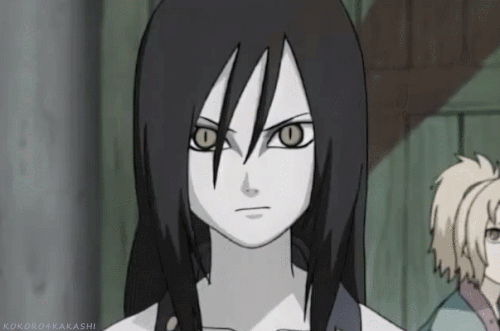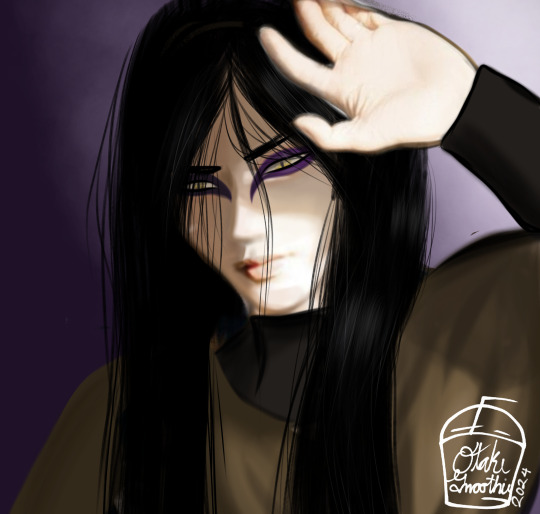#legendary snake
Explore tagged Tumblr posts
Text

A snake that launches itself at high velocities to kill its prey. The jaculus is a flying snake that is sometimes considered to be a dragon.
#BriefBestiary#bestiary#digital art#fantasy#folklore#legend#myth#mythology#snake#monster#legendary snake#javelin snake#jaculus#iaculus#dragon#greek legend#greek mythology#greek folklore
28 notes
·
View notes
Text

Happy Year of the Snake! 🐍
Starting off the new year with a new drawing, featuring Cyndaquil and Rayquaza 💕
You can get this as a 4k wallpaper buying a kofi on Cyndaquilism's (along with the regular rewards). Don't miss this seasonal exclusive! ☕➡️ ko-fi.com/cyndaquilism
#pokemon#johto starters#game freak#hinoarashi#johto region#pokemoncommunity#cyndaquilism#pokémon#cyndaquil#pokemon starters#rayquaza#johto anime#quilava#typhlosion#hoenn#cyndaquil sprite#pokemon soulsilver#pokemon cards#pokemon center#pokemon art#legendary pokemon#year of the snake#kofiartist#artist on kofi#kofi#ko fi support#cyndaquil gif#pokemon heartgold#johto#johto pokedex
198 notes
·
View notes
Photo

Sakiko, Mother of Summer
"My heart beats with the rhythm of the forest."
Artist: Livia Prima TCG Player Link Scryfall Link EDHREC Link
#mtg#magic the gathering#tcg#$0.27#livia prima#sakiko mother of summer#commander masters#legendary#creature#snake#shaman
88 notes
·
View notes
Text

the baby is blushing???
189 notes
·
View notes
Text
redesigned my batch of old cookie run ocs

#oc#original character#my art#oc artwork#oc art#ocs#artists on tumblr#cookie run#cookie run ovenbreak#crob#cookie run oc#theres a lot of rice yeah#theres lore. i think i cant find my old tangents about them#but the gist that i remember is#forbidden rice gets cursed somehow and by pure chance ends up bound to shrimp#n she turns into a snake if she gets too far away from shrimp 😭#idfk#avg cashier whos got a legendary cookie stufk with them
59 notes
·
View notes
Text
so apparently this is just going to be a Thing That I Do now. uh. enjoy?
#screaming incoherently into the void of tumblr#x’s edits#cuphead au#cuphead ddwtd#cuphead: don’t deal with the devil#cuphead: don't deal with the devil#cuphead: ddwtd#cddwtd#devildice#snake eyes#kind of. lil less devildice then the last edit but its still there!!#gabriel#mugman#cuphead and mugman#king dice#the devil cuphead#fan edit#fan edits#casino cups edit#casino cups#elder kettle#legendary chalice
37 notes
·
View notes
Text

Some Nintendo Snake (and Snake-adjacent) characters to celebrate the new year!
#year of the snake#pixel art#nintendo#serperior#medusa#mario#donkey kong#zelda#metroid#yoshi#kirby#pokemon#mother#fire emblem#kid icarus#pikmin#miitopia#xenoblade#the frog for whom the bell tolls#the legendary starfy
33 notes
·
View notes
Text

Shahmeran or Melusine
#shahmeran#melusine#myths and legends#myths#mythical creatures#fantasy#legendary creature#snake#snake woman#monster#painting#my artwork#artwork#traditional art#my art#art#artists on tumblr#handdrawingart#hand drawings#hand drawn#horror art#horror#dark aesthetic#dark art#creature#greek mythology#norse mythology#mythology and folklore#folklore#folk horror
20 notes
·
View notes
Text

slithery sneeeeek man
#art#fanart#anime#naruto#orochimaru#naruto fanart#orochimaru fanart#sannin#legendary sannin#snake daddy#orochimaru simp#anime fanart
60 notes
·
View notes
Text

[Image above: Gobajo statue with a crown of elephant, the largest animal on land, on its head. One of the Eight Legions.]
Legends of the humanoids
Reptilian humanoids (10)
The Eight Great Dragon Kings – Dragon tribes who listened to the Buddha's teachings.
They are the eight kings of the dragon races, who belong to the Eight Legions of Buddhist dieties. They protect the Buddha Dharma.
In Buddhism, Nagaraja (lit. 'king of the nagas') in Hindu mythology was incorporated as various dragon deities, including the Eight Great Dragon Kings.
Nagarajas are supernatural beings who are kings of the various races of Nagas, the divine or semi-divine, half-human, half-serpent beings that reside in the netherworld (Patala), and can occasionally take human form. The duties of the Nāga Kings included leading the nagas in protecting the Buddha, other enlightened beings, as well as protecting the Buddha Dharma.
Some of the most notable Nagarajas occurring in Buddhist scriptures are Virupaksa, Mucalinda, Dhrtarastra, and the following Eight Great Dragon Kings:
Nanda (Ananta, lit. joy): Ananta and Upananda were brother dragon kings who once fought against the Dragon King Sagara.
Upananda (lit. sublime joy): Brother of Nanda. Together with King Nanda, he protected the country of Magadha, ensuring that there was no famine, and when the Buddha descended, he sent rain to bless it and attended all the sittings where he preached. After the Buddha's death, he protected the Buddha Dharma forever.
Sagara (lit. 'Great Sea'): king of the Dragon Palace. King of the Great Sea Dragon.The 8-year-old Dragon Lady in the Lotus Sutra was the third princess of this Dragon King and was known as the Zennyo Ryuo (lit. "goodness woman dragon-king").
Vasuki (lit.'treasure'): sometimes referred to as the Nine-Headed Dragon King with the 'nine' meaning the extremity of yang and extremely large and powerful in number. Thus, he was thought of as the "Nine-Headed Dragon King". In the original legend, he was seldom called the 'Many-headed Dragon King' because there were a thousand of heads. Originally, he protected Mt. Meru (Ref1) and took tiny dragons to eat.
Takshaka (lit. ‘polyglot' or 'visual poison'): When this dragon is angrily stared at, the person is said to die out. From the Golden Light Sutra, the Seven-faced Tennyo is said to be the daughter of this Dragon King.
Anavatapta (lit. "cool and free from heat"): was said to live in the mythical pond in the northern Himalayas, Anuttara (lit. "free from heat"), which emitted great rivers in all directions to moisten the human continent of Jambudvīpa. A pond that stretches for approx. 3142 km, the banks of the pond were said to be made of four treasures, including gold, silver and others. This Dragon King was venerated as an incarnation of a Bodhisattva.
Manasvin (lit. 'giant' or 'great power'): When Asura (See2 & See3) attacked Kimi Castle with seawater, he twisted himself around and pushed the water back. Kimi Castle is the castle in Trayastrimsa at the top of Mt. Meru, where Sakra (Indra:Ref) resides.
Uppalaka (Utpala: lit. blue lotus flower): blue lotus flower dragon king. He is said to dwell in a pond that produces blue lotus flowers. In India, the shape of the petals and leaves is used metaphorically to represent the eye, especially the blue water lily (nilotpala), which is a metaphor for a beautiful eye. In Buddhism, the Buddha's eyes are considered to be dark blue (nila), one of the 32 phases (ref4) and 80 kinds of favourites (ref5), "eye colour ".

伝説のヒューマノイドたち
ヒト型爬虫類 (10)
八大龍王〜釈迦の教えに耳を傾けた龍族
彼らは、天龍八部衆に所属する龍族の八柱の王である。仏法を守護している。
仏教では、インド神話におけるナーガラジャ (ナーガの諸王の意) が、八大龍王をはじめさまざまな龍神として取り入れられた。ナーガラージャとは、冥界 (パタラ) に住む神または半神半人の蛇のような存在であるナーガ (参照) の様々な種族の王であり、時には人間の姿をとることもある超自然的な存在のこと。
ナーガ王たちの任務は、ナーガたちを率いて仏陀や他の悟りを開いた存在たちを守護し、仏陀の教えを守ることであった。
仏教経典に登場するナーガラージャの中で最も有名なものには、ヴィルパクサ、ムカリンダ、ドルタラストラ、そして以下の八大龍王たちである:
難陀 (アナンタ:歓喜の意): 難陀と跋難陀は兄弟竜王で娑伽羅 (サーガラ:大海の意) 龍王と戦ったことがあった。
跋難陀 (ウパナンダ: 亜歓喜の意): 難陀の弟。難陀竜王と共にマガダ国を保護して飢饉なからしめ、また釈迦の降生の時、雨を降らしてこれを灌ぎ、説法の会座に必ず参じ、釈迦仏入滅の後は永く仏法を守護した。
娑伽羅 (サーガラ:大海の意): 龍宮の王。大海龍王。法華経に登場する八歳の龍女はこの龍王の第三王女で「善女龍王」と呼ばれた。
和修吉 (ヴァースキ: 宝有の意):「九頭龍王」と呼ばれることもある。「九」は陽の極まりを意味し、数が非常に多く強力であることから、「九頭龍王」と考えられた。そのため、彼は「九頭の龍王」と考えられていた。元の伝説では、頭が千個あったため、稀に「多頭龍王」と呼ばれることもあった。もともとは、須弥山(参照1)を守り、細龍を捕らえて食べていた。
徳叉迦 (タクシャカ: 多舌、視毒の意): この龍が怒って凝視された時、その人は息絶えるといわれる。身延鏡と金光明経から七面天女は、この龍王の娘とされている。
阿那婆達多 (アナヴァタプタ: 清涼、無熱悩の意): ヒマラヤ山脈北部にある神話上の池、阿耨達池 (無熱悩池) に住み、四方に大河を出して人間の住む大陸 閻浮提 (えんぶだい) を潤していた。 全長800里 (約3142 km)にも及ぶ池の岸辺は金・銀などの四宝よりなっていたという。この龍王は菩薩の化身として崇められていた。
摩那斯 (マナスヴィン: 大身、大力の意): 阿修羅(参照2 & 参照3)が海水をもって喜見城を侵したとき、身をよじらせて海水を押し戻したという。喜見城とは須弥山の頂上の 忉利天にある 帝釈天 (梵: インドラ参照) の居城。
優鉢羅 (ウッパラカ: 青蓮華の意): 青蓮華龍王。青蓮華を生ずる池に住まうという。インドでは花弁や葉などの形状を比喩的に眼を現すことに用いるが、特に青睡蓮(nilotpala)は美しい眼に喩えられる。仏教では仏陀の眼は紺青色(nila)とされ、三十二相八十種好(参照4)の一つ「眼色如紺青相」となっている。
#eight dragon kings#dragon#humanoids#legendary creatures#hybrids#hybrid beasts#cryptids#therianthropy#legend#mythology#folklore#nature#art#reptilian#snake
100 notes
·
View notes
Text

Rarely, some nozuchi are said to be able to take on human shape. They appear as a monk, however they have no features other than the mouth atop their head, same as it is in their serpentine form.
#BriefBestiary#bestiary#digital art#fantasy#folklore#legend#myth#mythology#yokai#youkai#nozuchi#japanese folklore#japanese legend#legendary snake#monster
20 notes
·
View notes
Text

#orochimaru#akatsuki#orochimaru naruto#happy birthday orochimaru#naruto#naruto shippuden#dessins#official art#masashi kishimoto#twitter#x#snake#sannin#legendary sannin#spooky season#spooky month#tongue
27 notes
·
View notes
Text
For spooky season
Mitsuki: Why do you have a plastic skeleton strung up?
Anko: It’s decorations for the upcoming Horror House show.
Mitsuki: …? Plastic skeletons are scary?
Anko: Couldn’t really get my hands on real one.
Mitsuki: Oh. *thin smile* I can help. I know where to source tones of real, grotesque skelet—
Konohamaru: [Sweeps in and covers Mitsuki’s mouth]
Konohamaru: [Very loud awkward laugh]
#incorrect quotes#naruto#boruto#mitsuki#konohamaru sarutobi#anko mitarashi#snake sannin#orochimaru#has graveyard for all the bizarre experiments#halloween#spooky season#naruto shippuden#legendary sannin#Mitsuki knows too much#and it doesn't bother him at all#Konohamaru saves the day#and Anko's mental health#Mitsuki is about to mentally scar everyone#he would#he so would#Ghost milk#Konohamaru: drags Mitsuki away#Anko: “Hit me up when your sensei is done lecturing you”#Mitsuki: thumbs up
21 notes
·
View notes
Photo

Seshiro the Anointed
Armed and dangerous.
Artist: NIARK1 TCG Player Link Scryfall Link EDHREC Link
#mtg#magic the gathering#tcg#$3.35#niark1#seshiro the anointed#secret lair drop#legendary#creature#snake#monk
46 notes
·
View notes
Text
guys be honest do u think orochimaru is beautiful or am i delusional
56 notes
·
View notes
Note
could you draw Telemachus and Athena bonding?

Still working on a Telemachus design but here ya go
#myart#myartwork#request#telemachus epic the musical#athena epic#answering asks#If anyone asks about the snakes in her hair I saw that it was one of her animals but I could be wrong lol#had legendary on repeat as I drew this
32 notes
·
View notes